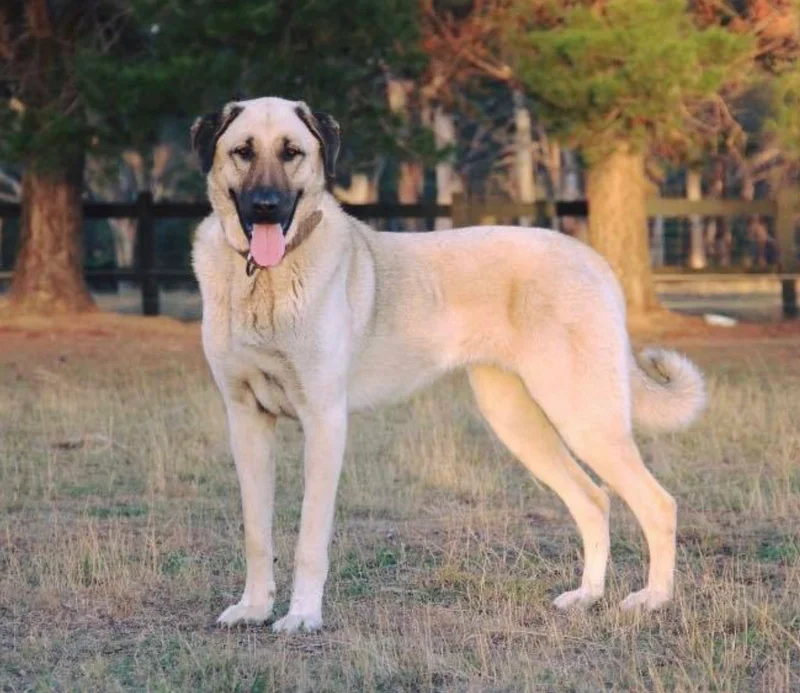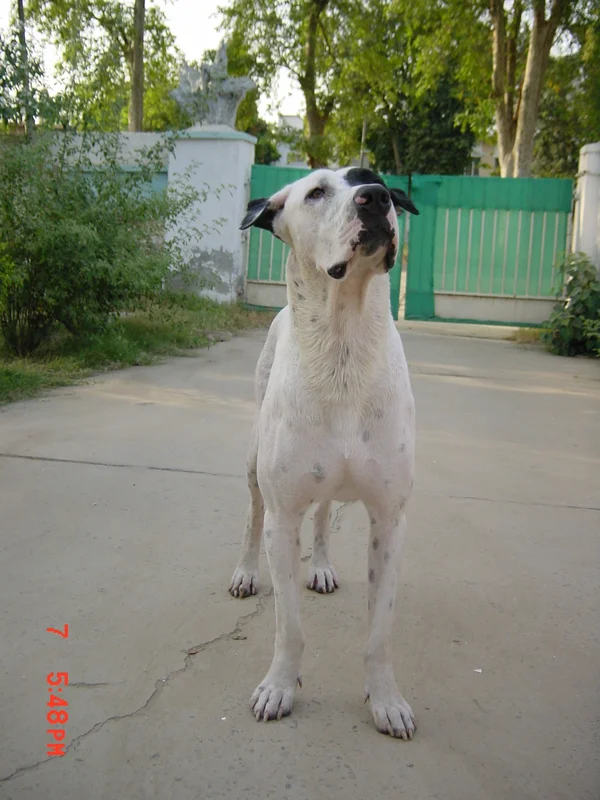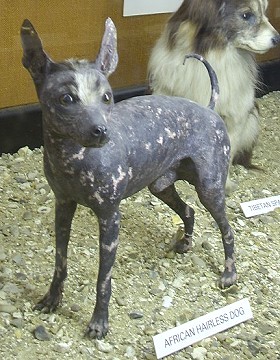Kaikadi
The Kaikadi is a small, agile terrier breed from Maharashtra, India, known for its loyalty, intelligence, and exceptional watchdog abilities.
Overview
🐕Breed Overview
✨Key Traits
💡What Makes Kaikadi Special
The Kaikadi's key traits include their keen sense of smell and agility, which make them exceptional hunters. They are also known for their loyalty and protective nature, often forming strong bonds with one family member.
Their intelligence allows them to learn commands quickly, and they thrive on mental stimulation. Kaikadis are naturally curious and enjoy exploring their surroundings, making them well-suited for active families who can provide them with ample exercise and engagement.
Their adaptability to different environments, while preferring open spaces, allows them to fit into various lifestyles as long as their exercise needs are met.
The Kaikadi is a unique terrier breed hailing from Maharashtra, India, named after the nomadic Kaikadi tribe. These dogs are small, typically standing around 40 centimeters or less, with a slender build characterized by long legs, powerful thighs, and a long tapering tail. Their heads are long and thin, featuring prominent eyes and erect ears that stand alert.
The breed's coat is short and can be found in a variety of colors, including white, tan, and black. Known for their exceptional watchdog abilities, Kaikadis were bred to protect herds and hunt vermin, making them invaluable companions for the Kaikadi tribe. Their keen senses and agility allow them to excel in open spaces, where they can run and explore freely.
While they may adapt to smaller living environments, they thrive in rural settings where they can engage in their natural instincts. The Kaikadi's temperament is marked by loyalty and intelligence, making them devoted family members. They require consistent training and socialization to ensure they develop into well-rounded companions.
With their rich history and unique characteristics, the Kaikadi is a breed that embodies the spirit of its nomadic heritage, making them a fascinating choice for dog lovers seeking an active and engaging companion.
🎉Fun Facts
Kaikadis are agile and can navigate rough terrains with ease, making them excellent companions for outdoor activities.
The Kaikadi is known for its exceptional hunting skills, especially in tracking vermin and hares.
They have a strong bond with their families and are known to be protective of their loved ones.
Breed Characteristics
Family & Friends
Good Behavior
Get Up & Go
Household Harmony
Temperament & Personality
✨Key Traits
🐕Core Temperament
The Kaikadi is characterized by its loyal and protective temperament. They are naturally alert and make excellent watchdogs, often discerning between friends and foes.
While they can be reserved around strangers, they are affectionate and playful with their families. Their intelligence and eagerness to please make them relatively easy to train, but they require consistent guidance and socialization to thrive.
Kaikadis are energetic and enjoy outdoor activities, making them great companions for active families. Their strong prey drive may lead them to chase small animals, so supervision is essential during outdoor play.
💫Personality Profile
The Kaikadi is a lively and intelligent breed, known for its loyalty and protective instincts. They are alert and attentive, making them excellent watchdogs.
With a strong bond to their families, Kaikadis are affectionate and enjoy spending time with their human companions. They can be reserved around strangers but are generally friendly once they feel comfortable.
Their playful nature makes them great companions for children, and they thrive in active households where they can engage in various activities. However, they require consistent training and socialization to ensure they develop into well-rounded dogs.
🔊Vocal Tendencies
The Kaikadi has a moderate barking tendency, often alerting their owners to any perceived threats or unusual sounds. They may bark when strangers approach or when they are excited during playtime.
While they are not excessive barkers, their watchdog instincts can lead them to vocalize when they feel it is necessary. Proper training and socialization can help manage their barking behavior, ensuring they only vocalize when appropriate.
Overall, their noise level is manageable, making them suitable for families who appreciate a dog that can communicate effectively without being overly vocal.
Affection & Social Traits
Energy & Activity
Communication Style
Care Requirements
🏃♂️Exercise Requirements
Daily Exercise
The Kaikadi breed requires a moderate amount of exercise to maintain their physical and mental well-being. Ideally, they should engage in at least 60 minutes of exercise daily, which can include activities such as walking, running, and playing fetch. Given their history as watchdogs and hunters, they thrive in open spaces where they can run freely.
Activities that stimulate their hunting instincts, such as scent games or agility training, are particularly beneficial. Puppies should have shorter, more frequent play sessions to avoid overexertion, while senior dogs may require gentler activities to accommodate their energy levels. Regular exercise not only helps manage their weight but also reduces the likelihood of behavioral issues stemming from boredom or pent-up energy.
Insufficient exercise can lead to destructive behaviors or anxiety, making it crucial for owners to provide ample opportunities for physical activity.
Preferred Activities
🏠Living & Adaptability
Space Requirements
The Kaikadi breed is best suited for large open areas rather than urban settings. They thrive in environments where they have room to roam and explore, such as rural homes with spacious yards or farms.
While they can adapt to smaller spaces, it is essential to provide them with regular access to larger areas for exercise. Owners in apartments or homes with limited outdoor space should ensure they can commit to daily outings in parks or open fields.
The breed's size and energy level necessitate a living environment that allows for physical activity and mental stimulation, as confinement can lead to frustration and behavioral issues.
Climate Preference
🍲Feeding Guide
Schedule
Food Types
Portion Size
Special Nutritional Needs
The Kaikadi breed does not have specific dietary restrictions, but it is essential to provide a balanced diet rich in protein to support their active lifestyle. Owners should be mindful of portion sizes to prevent obesity, especially in less active dogs. Regular veterinary check-ups can help monitor their health and adjust dietary needs as necessary.
✨Grooming Requirements
Grooming Overview
The Kaikadi has a short coat that requires minimal grooming. Regular brushing once a week is sufficient to remove loose hair and keep the coat healthy.
Bathing should be done as needed, typically every few months or when the dog gets particularly dirty. Owners should also pay attention to the dog's ears, ensuring they are clean and free of debris, as well as trimming nails regularly to prevent overgrowth.
Overall, the grooming routine for a Kaikadi is straightforward and manageable, making them an excellent choice for those who prefer low-maintenance breeds.
Care Schedule
Brush weekly, bathe as needed, trim nails every 2-4 weeks.
Health Profile
⚕️Health Care
Regular health care is vital for the Kaikadi's longevity. Routine veterinary check-ups, vaccinations, and preventive treatments can help detect health issues early and ensure the dog remains healthy throughout its life.
Owners should also be proactive in monitoring their dog's weight, dental health, and overall condition. Establishing a consistent health care routine can significantly impact the dog's lifespan and quality of life.
Health Issues Overview
⏳Average Lifespan
Genetic Factors
Genetics play a crucial role in the Kaikadi's lifespan, as certain hereditary health issues can affect their overall well-being. Responsible breeding practices that prioritize genetic diversity and health testing can help reduce the prevalence of genetic disorders.
Potential owners should seek reputable breeders who conduct health screenings and are knowledgeable about the breed's lineage to ensure they are selecting a healthy puppy. Understanding the genetic background of the breed can help owners anticipate potential health concerns and take proactive measures to address them.
Living Conditions
The Kaikadi's lifespan can be influenced by various environmental factors, including housing conditions, climate, and social interactions. Dogs living in spacious, active environments tend to be healthier and live longer due to increased physical activity and mental stimulation.
Conversely, those confined to small spaces with limited exercise may experience health issues related to obesity and boredom. Providing a stimulating environment with opportunities for socialization and play can significantly enhance the dog's quality of life and longevity.
🏥Common Health Issues
Hip Dysplasia
Warning Signs
🔬Diagnosis
Veterinarians typically diagnose hip dysplasia through physical examinations and X-rays.
💊Treatment
Weight management, physical therapy, and in severe cases, surgical intervention.
📝Management Tips
Maintain a healthy weight, provide joint supplements, and engage in low-impact exercise to support joint health.
Patellar Luxation
Warning Signs
🔬Diagnosis
Diagnosis is made through physical examination and observation of the dog's gait.
💊Treatment
Surgical correction may be necessary in severe cases.
📝Management Tips
Maintain a healthy weight and provide joint supplements; consult a veterinarian for treatment options if symptoms arise.
🛡️Preventive Care
🔬Hip Evaluation
Hip Evaluation assesses the dog's hip joints for dysplasia and other abnormalities, which can lead to mobility issues.
📅 Recommended annually for adults, starting at one year of age.
🔬Patellar Luxation Evaluation
Patellar Luxation Evaluation checks for dislocation of the kneecap, which can affect mobility and cause pain.
📅 Recommended annually for adults, starting at one year of age.
Training
🧠Intelligence & Trainability
💪Work Drive
The Kaikadi breed has a strong work drive, stemming from its historical roles as a watchdog and hunting companion. They thrive when given tasks that challenge their physical and mental abilities.
Activities such as agility training, scent work, and obedience training can provide the stimulation they need to stay engaged and happy. The breed's intelligence and eagerness to please make them quick learners, but they require consistent direction and motivation to perform at their best.
Without sufficient mental and physical challenges, Kaikadis may become bored, leading to undesirable behaviors. Owners should strive to incorporate a variety of activities into their routine to keep their Kaikadi fulfilled and well-rounded.
⚠️Training Considerations
The Kaikadi breed may exhibit some behavioral challenges, particularly if not properly socialized from a young age. Their natural instincts as watchdogs can lead to excessive barking or territorial behavior if they perceive a threat.
To mitigate these challenges, early socialization with various people, animals, and environments is crucial. Training should focus on positive reinforcement techniques, rewarding desired behaviors while redirecting unwanted ones.
Consistent training sessions that incorporate mental stimulation, such as puzzle toys or scent work, can help channel their energy and intelligence effectively. Owners should be patient and understanding, as the Kaikadi may require time to adjust to new situations and experiences.
📝Training Tips
Training a Kaikadi requires a firm yet gentle approach, utilizing positive reinforcement methods to encourage desired behaviors. Start with basic commands such as sit, stay, and come, gradually introducing more complex tasks as the dog becomes more comfortable.
Consistency is key; regular training sessions will help reinforce learning and build a strong bond between the dog and owner. Incorporating play into training can make the process enjoyable for the Kaikadi, keeping them engaged and motivated.
Socialization is equally important; exposing the dog to different environments, people, and other animals will help them develop confidence and reduce anxiety in new situations. Owners should also be aware of the breed's independent nature, allowing for some autonomy while guiding them toward appropriate behaviors.
History & Heritage
📜Origin Story
The Kaikadi breed traces its roots back to the nomadic Kaikadi tribe in Maharashtra, India. This tribe relied on the Kaikadi dogs for their herding and hunting needs, utilizing their keen senses and agility to protect livestock from predators and hunt small game.
The breed's name reflects its close association with the tribe, symbolizing the deep bond between the Kaikadi people and their dogs. As the tribe moved across various terrains, the dogs adapted to their environment, developing traits that made them exceptional watchdogs and hunters.
The Kaikadi's history is intertwined with the cultural practices of the tribe, showcasing the importance of working dogs in traditional lifestyles. Today, the breed serves as a living testament to the Kaikadi tribe's heritage and the enduring relationship between humans and dogs.
⏳Development History
The Kaikadi breed has evolved alongside the nomadic Kaikadi tribe in Maharashtra, India. Historically, these dogs were bred for their hunting prowess and ability to guard livestock.
Over time, they have developed a strong bond with their human companions, showcasing loyalty and intelligence. The breed's physical characteristics, such as their slender build and keen senses, have been honed through generations of living in open areas, where they could effectively perform their roles.
Despite their utility, the Kaikadi has faced challenges due to urbanization and changing lifestyles, leading to a decline in their population. Efforts to promote awareness and appreciation for the breed are essential to ensure its survival and continued relevance in modern society.
🛡️Purpose & Historical Role
Historically, the Kaikadi breed served as both a watchdog and a hunting companion for the nomadic Kaikadi tribe. Their primary role was to protect herds from predators and to hunt small game such as hares and vermin.
The breed's agility and keen senses made them invaluable in rural settings, where they could patrol large areas and alert their owners to potential threats. Over time, the Kaikadi has also become a beloved family companion, known for its loyalty and protective instincts.
In modern times, while their traditional roles have diminished due to changing lifestyles, the Kaikadi remains a cherished breed among those who appreciate its unique heritage and capabilities.
🏺Cultural Significance
The Kaikadi breed is named after a nomadic tribe in Maharashtra, India, highlighting its historical role as a companion and protector for herders. This breed has been integral to the lifestyle of the Kaikadi people, serving as vigilant watchdogs and skilled hunters.
Their ability to guard livestock and hunt vermin has made them valuable assets in rural communities. The breed's significance extends beyond utility; it embodies the cultural heritage of the Kaikadi tribe, representing resilience and adaptability in the face of changing environments.
As urbanization increases, the Kaikadi serves as a reminder of the bond between humans and their working dogs, emphasizing the importance of preserving such breeds that have played vital roles in human history.
Conservation Status
This breed is less common but has stable populations in certain regions.









